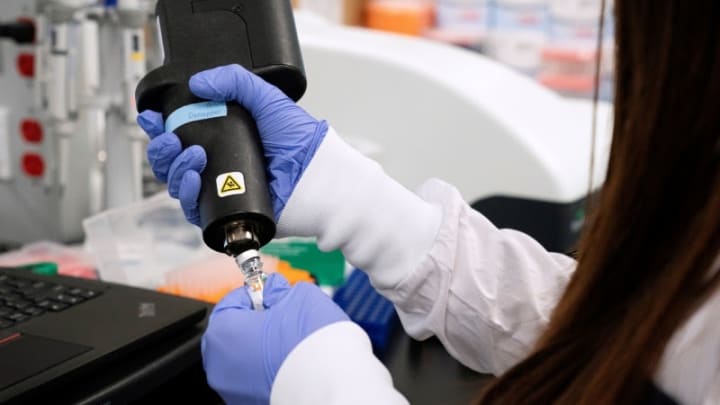
Published by Malay Mail, Astro Awani & Focus Malaysia, image from Devex.
Reportedly, RM3 billion has been allocated to procure vaccines through the Covax facility – a global vaccine allocation platform. As reported in The Star, this figure is expected to account for the immunisation of 70 per cent of Malaysia’s population.
It was also mentioned that under this platform, Malaysia was offered a maximum price set for the Covid-19 vaccine at “US$21 (RM87.50) each.”
Firstly, the quoted “immunisation” may not be the same as simply being vaccinated.
Broadly speaking, the rate at which vaccination leads to successful immunisation/protection is the effectiveness/efficacy. Taking the statement at face value, there have been reports of vaccines with efficacies around 90 per cent.
As mentioned by Matthew Herper, senior writer for medicine at STAT — a US-based health news site — expert projections of Covid-19 vaccine effectiveness were around 60 per cent–70 per cent.
Assuming Malaysia’s population of 33 million, 70 per cent would be 23.1 million people.
Based on 90 per cent efficacy, we’ll have to vaccinate 25.7 million people to get to the target of 23.1 million “successfully immunised population.” Following the quoted price of RM87.5 “each” — which is assumed to mean “per dose” — that equates to RM2.25 billion. As a back-of-the-envelope calculation, this appears to makes sense at it is below RM3 billion.
However, more than one dose may be needed per person. For example, both BNT162b2 vaccine (by Pfizer-BioNTech) and Sputnik V vaccine (by Gamaleya Research Institute) indicate the requirement of two doses. If so, the cost doubles and we’ll need RM4.5 billion – outside of the RM3 billion allocated for Covax.
Following this calculation, dropping the efficacy rate to 70 per cent would raise the total rounded figure to RM5.8 billion — an additional RM2.8 billion on top of the RM3 billion. A 30 per cent discount from the ceiling price brings the total estimated cost down to about RM 4 billion — which is still about RM1 billion short of the allocated budget.
We’ll only get to RM3 billion at a 51.8 per cent discount.
Roughly speaking, either get a vaccine which requires one dose only, or negotiate to about half the price per dose. Neither options are easy — unless the price was already heavily marked-up and unless sufficiently proven high-performing single-dose vaccines are easy to find.
In any case, the priority should always be vaccine performance, (safety, efficacy, efficiency, immunity retainment and other technical specifications), followed by costs and other operational considerations.
That being said, it was mentioned that the Covid-19 fund has been increased from RM45 billion, to RM65 billion, and the additional RM20 billion was said to be inclusive of the expected vaccine procurement. Perhaps a portion of the RM20 billion — which is likely allocated to secure vaccines through bilateral deals — can still be channelled for Covax if the RM3 billion proves insufficient.
Outside of the obvious, there are other parameters that may complicate vaccination efforts, and therefore, complicating cost estimations. From those receiving vaccines, a portion would gain immunity — but how long would it last?
Immunity retainment appears to be a question that cannot be confidently answered with a high level of certainty because by nature, it’s a parameter that requires a long time to be determined confidently, especially for the more novel vaccines.
Vaccines that are using a historically more established technology may have more room to claim a longer duration, but only hard data from current studies on the specific vaccine may sufficiently answer this. The same goes with any potential long-term side effects of the vaccines – especially if it uses novel adjuvants (vaccine mixture compounds).
Short retainment of immunity can undermine even high-efficacy vaccines. For context, immunity retainment bar set by Chinese regulators can be as low as six months. This can complicate vaccination operations — by when would we need to secure the next batch? How long would it to take get it?
Keep in mind that supply chain issues are not unique to Malaysia and may already be “maxed out” by global demands.
For example, Supply Chain Dive — a leading publication focused on supply chain management – reported a shortage of sand to make glass vials, and through what could be a domino-effect, a shortage in medical glass supply (used in producing the small glass vials that hold vaccine doses) was reported in the Wall Street Journal.
With countries scrambling to secure vaccines, supply chains may also be monopolised.
Assuming we get through these potential challenges, would the people that had successfully gained immunity from the first round still be protected by the time we do get the new batch? Supplementary doses may have to budgeted.
We can further complicate the scenario with the use of “ultra-cold chains” reportedly required for storage and movement of some vaccines, which may only be available at the most specialised sites. This may require handling by trained personnel and may limit vaccination event duration. This issue could extend itself to fill-and-finish processes.
Therefore, buffer doses to account for potential operational/handling losses may have to be accounted for in the purchase volumes.
It is likely that the 70 per cent immunised population target is what the authorities estimated to achieve herd-immunity i.e. enough protected individuals to “surround” the unprotected ones. Accordingly, this requires population uniformity.
According to a global survey conducted by Ipsos from July 24 to August 7, a substantial 15 per cent of Malaysians disagree to get vaccinated. Assuming this figure isn’t spread evenly enough, we’ll get a concentration of protected and unprotected population i.e. non-uniformed. This could undermine herd-immunity.
Between the target of 70 per cent immunised population and 15 per cent “anti-vaxxer” group, that leaves a rough buffer of 15 per cent of the population to achieve this target.
Arguably, that’s not a lot of room for errors to carry out what could be an unprecedented nation-wide vaccination effort to achieve sustainable nation-wide immunity. The associated operational costs and potential additional doses must not be underestimated in budget allocations.
Ahmad Ameen Mohd Kamal is Head of Science and Technology at EMIR Research, an independent think tank focused on strategic policy recommendations based on rigorous research.

